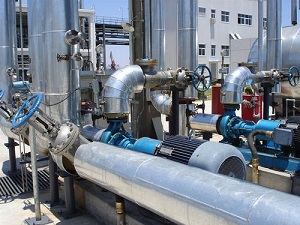Analysis of Application Cleaning of Sanitary Valves

In recent years, the market of the sanitary valve is constantly changing in the face of broad market space and increasingly advanced science and technology with the improvement of living standards, and sanitary valves are widely used in beverage, dairy, pharmaceutical, water treatment, food, semiconductor, and other fields.
Sanitary valves should be checked and thoroughly cleaned before use, and their surface should be free of oil and other dirt so that they can work normally.
Sanitary valves are rusted by the attachment of exotic metals
Rust can be easily removed by wiping with a sponge or cloth and a neutral cleaning agent or soapy water when rust is incidental to iron powder and other products and then flush the valve with clean water. Be careful not to leave the cleaning solution on it. This level of rust removal is not only easier to maintain and more effective, but also cheaper as long as you do the cleaning immediately. However, if left unattended, a mixture of ferric hydroxide, ferric oxide, ferric sulfite, and others will soon form, with a deep rusting of brown.
Under this situation, you can completely clean it with the cleaning liquid for stainless steel or 15℅ of diluted with nitric acid sold in markets. However, there is also rust that cannot be removed, and it can damage the stainless steel surface in some ways, then the valve should be ground and wiped with sandpaper or a stainless steel brush, and then cleaned with a cleaning solution.
Rusting is caused by adhesion to harmful components in the exhaust
Stainless steel surfaces are prone to pollution and sometimes show specks of rust in factory areas, or in areas with lots of traffic, most of which are caused by the exhaust of cars, air conditioners, or factory smoke exhaust contains harmful components.
Rusting caused by the attachment of salt
Exposed to coastal winds, SUS 304 stainless steel also produces red rust over a short period of time. In coastal areas, SUS 316, which is more resistant to corrosion, is used as stainless steel as possible. As for stainless steel outerwear with SUS 304, do as much as three to four times a year for regular cleaning.
Rusting caused by the adhesive cleaning solution
If you can’t remove the rust with a neutral cleaning agent, you can do so with a cleaning liquid.
Rusting caused by hand dirt or fingerprints
If the rust cannot be removed by using a neutral cleaning agent, sponge, cloth and other organic solvents (alcohol, light oil, acetone, etc.) will be used to wipe. When this does not work, you can use stainless steel to remove it with a cleaning solution.





